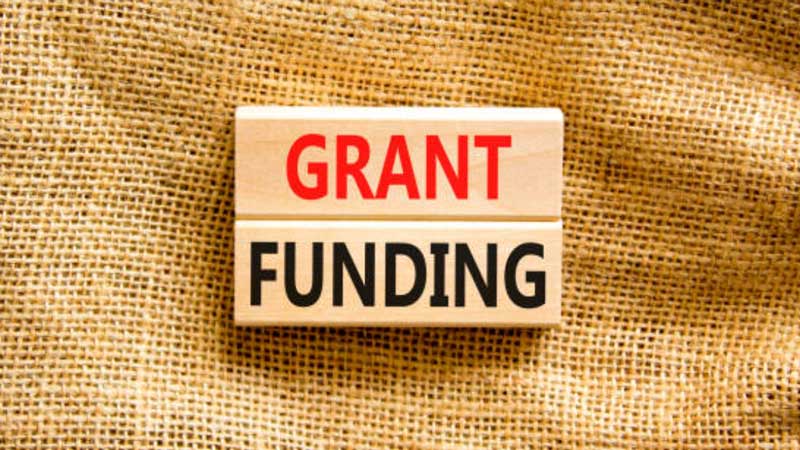
現在、2つの国際グラントを申請準備中。
とにかく書くこと多くて萎えるけど、もらえる金額も桁違いなので、これからも頑張ってどんどん出していきたいところ。
……とは言っても、慣れない単語などで時間を使うことも多く、「このセクション、どんなことを書けばいいのかな?」とキーボードの手が止まることも屡々……。
そんなとき、偶然見つけた下記 "NIHグラントの書き方" がとてもわかりすかったので、書き留めておくことに。
The Specific Aims section is the most vital part of any NIH grant application. In this section, you must quickly gain the reviewers’ trust and confidence while simultaneously convincing them that your work is important to fund.
同じところで躓いている人達の何かの参考になれば幸いです。。。
Specific Aims とは
NIH助成金申請の中で、最も重要な「Specific Aims」セクション。
これは NIH に限らず、ほとんど全てのグラントで要となる……と思う。
このセクションでは、短時間でレビュアーの信頼を得、自分の仕事が資金提供に値するものであることを納得させる必要がある。
また、その proposal を遂行できるのは、自分達が構築した研究チームである、ということを主張する必要がある。
「Specific Aims」は助成金提案の中心となるので、最初に書くべきセクションといえる。そして、このページの内容がよく練られていれば、助成金申請の残りの部分を書くのはより簡単になる……ハズ!
最初の導入段落:The Introductory Paragraph
この段落では、研究の主題をレビューア達に紹介し、注意を引き付ける。
ここでは、資金提供団体が取り組む重要なニーズに直接関連する知識の大きなギャップを説明する必要がある。
資金提供団体のミッションステートメントを理解していて、自分達が埋めようとしている重要なニーズが、そのミッションにうまくフィットすることを確認することが重要。
最初の文/Hook
この文で、自分達の提案がどういうものかを簡単に説明する。
ここでは、この研究の重要性や緊急性を感覚的に伝える必要がある。
この研究のトピックが何であり、研究を行うことが重要である理由を端的に説明する。
既知の事実 (Known Information)
特定の分野で現在知られていることを述べる。この部分は長くならないように気をつけながら(3〜5分程度)、レビューア達がこのプロジェクトの必要性を理解する為に必要な情報を過不足なく提供する必要がある。
この研究の主題をレビューア達に確認しながら、キーポイントのみに焦点を当てて簡潔に保つことを心がける。
ナレッジギャップ (knoledge gap)
ナレッジギャップは、まだ知られていない情報の部分。
既知の事実と、まだ知られていない情報を説明し、提案している研究がそのナレッジギャップをどのように埋めるかを伝える。
要求する資金がそのナレッジギャップを埋めるためにどのように使用されるのかを明確にする。
キーポイントを強調するためにイタリック体や下線を使用すると良いが、過度に使わないように気をつける。
ニーズ (Critical Need)
この研究の先に得られる知識(仮説主導)、開発しようとしている技術、新しい化合物、または治療法など。
医学的に関連する知識を増やすため、または医療を改善するためにどう重要となるか。
つまりは、この研究が資金提供されるべき理由、ということ。
ここでは、取り組もうとしている課題の重要性を強調する。
Viruses are thought to be involved in 15% to 20% of human cancers worldwide, thus providing critical tools to reveal common mechanisms involved in human malignancies. As the etiologic agent of adult T cell leukemia/lymphoma (ATLL), human T cell leukemia virus type I (HTLV-1) is just such a virus. HTLV-1 encodes a potent oncoprotein, Tax, which regulates important cellular pathways including gene expression, proliferation, apoptosis, and polarity. Over the years, Tax has proven to be a valuable model system in which to interrogate cellular processes, revealing pathways and mechanisms that play important roles in cellular transformation. Although the Tax oncoprotein has been shown to transform cells in culture and to induce tumors in a variety of transgenic mouse models, the mechanism by which Tax transforms cells is not well understood. A large number of Tax mutants have been generated and their biological activities have been thoroughly characterized, primarily in cell culture systems. Currently, a major obstacle in the field is that the transforming activity of Tax mutants cannot be compared using available transgenic models due to random transgene integration sites, variable transgene copy number, and inconsistent transgene expression levels, making it difficult to link the biological activities of Tax mutants with their transforming potential.
Color Key: Hook Known Information Gap in Knowledge Critical Need
第二段落: The Second Paragraph
この段落では、ナレッジギャップを埋める解決策を紹介する。
現在のナレッジギャップを解決する解決策と、この解決策を達成するための専門知識を持っていることをレビューア達に確信させることが重要。
言葉はシンプルで、関連性があり、要点を絞る。
- 何をしたいのか?
- なぜそれをしているのか?
- どのようにそれをしたいのか?
この段落は柔軟性があり、提案の構造や目的によって書く内容が異なる。
例えば、この研究は厳密に仮説主導型で、一般的な仮説のいくつかの要素をテストすることを求めている場合や、重要なツールや技術を開発することを求めている場合など、その必要性に基づいて書く内容は変わってくる。
ただし、どんな場合でも、以下の要素を含むよう心がける。
長期目標 (Long-Term Goal)
包括的な研究目標を示す。
特定の資金提供機関からのサポートを求めているので、長期的な目標が資金提供機関の使命と一致していることを確認することが重要。
この文での言葉は一般的なものにする。ここでは長期的な計画を述べており、レビューア達は具体的な内容が変わる可能性があることは理解している。
仮説と提案の目的 (Hypothesis and Proposal Objectives)
長期目標に応じて、Hypothesis と Objectives を書く。
中心となる仮説は、明確に、具体的に、そしてシンプルな言葉で述べる。
この研究が仮説主導(hypothesis-driven)で検証可能であることを、レビューア達に示す。
プロジェクトがどのようにして重要なニーズに対応しているか、提案された解決策を明確に述べる。
できるだけ曖昧な仮説を避ける。曖昧な仮説にすると、提案された研究で何を判断しようとしているのかがレビューアに伝わりにくい。
根拠 (Rationale)
中心となる仮説に至った方法を説明する(例:過去の研究や公開された文献を使用)。
簡潔に、プロジェクトの完成が可能にすること(例:新しい治療法)を述べ、資金提供機関の使命に結びつける。
資格 (Qualifications)
なぜこの研究デザインやチームが研究目標を達成するのに最適であるかを簡潔に述べる。
予備データ、構成メンバーの資格や能力、実験室の設備など。簡潔に!
To solve this problem we will develop an innovative mouse model system in which to study Tax tumorigenesis using targeting vectors containing wild-type or mutant Tax genes that are silenced by a preceding floxed stop cassette. These vectors will be knocked in to the Rosa26 locus of recipient mice by recombination. After crossing these mice with Lck-CRE mice, the stop cassette will be specifically excised in developing thymocytes where the Lck promoter is active, allowing conditional expression of wild-type or mutant Tax proteins in T cells, the natural target of HTLV-1 infection. The feasibility of our proposed mouse model is supported by the fact that Lck-Tax transgenic mice have been developed and produce a leukemia that closely resembles ATLL. Thus, targeting of Tax expression in cells in which the Lck promoter is active is expected to produce a similar disease in our model. In our improved model system, insertion into the Rosa26 locus will eliminate random integration sites and standardize gene copy number resulting in consistent levels of wild-type and mutant Tax protein expression.
Color Key: Long-term Goal Proposal Objective Rationale Hypothesis Pay-off
The Aims
いよいよ Aims!
このセクションでは、仮説を検証するために使用する各目的を簡潔に説明する。
それぞれのAimsは関連しているけれども、お互い依存しないようにする。
これを行うことで、1つのAimが失敗した場合(または1つのAimからの予期しない結果の場合)、他のAimに悪影響を及ぼしたり、他のAimの完了を防ぐがないようにする。
2-4文程度で、実験的アプローチと各目的が大きな仮説にどのように答えるのかを説明する。
典型的なNIH R01助成金は、2から4の目的を持つことが多い。
各目的を別の段落で説明する。
- 仮説との関係で目的を明確に述べる能動的なタイトルをつける。
- 各目的の実験アプローチと予想される結果の簡単な要約を含める。
- スペースがあれば、サブ仮説(全体の仮説の小さな部分)と各目的の成果の小さな説明を含める。これを含めることで、各Aimに価値があり、検証可能で、他のものとは独立している、という印象を与えることができる。
- レビューアが各目的を明確に読み取り、理解するのを容易にするため、各特定の目的を区別するために見出しや箇条書きを使用する。
Aim 1 will establish an innovative mouse model for HTLV-1 Tax tumorigenesis. Targeting vectors containing silenced wild-type or mutant Tax genes will be knocked in to the Rosa26 locus of C57BL/6 mice. These mice will then be crossed with homozygous Lck-CRE mice, thereby excising the stop cassette and generating mice that express wild-type or mutant Tax proteins specifically in T cells.
Aim 2 will examine the effect of mutations that disable specific biological functions of Tax on Tax-mediated tumorigenesis. Tax can bind to and regulate the activity of members of the SRF, CREB, NF-kB and PBM protein families, each of which has been implicated in oncogenesis. Mice established in Aim 1 will allow us to compare for the first time the tumorigenic potential of wild-type and mutant Tax proteins in an effort to identify pathways that are required for Tax tumorigenesis.
Color Key: Aim Title Experimental Strategy Outcome or Impact
最終要約段落:The Final Summary Paragraph
このSpecific Aimsの最後の段落はよく見過ごされがちだけれど、提案の影響には不可欠!
Specific Aimsページを砂時計に例えると、広い部分は一般的な情報や全体的な意義を表し、狭い部分は詳細部分。Aimセクションで終了すると、細かい詳細と狭い範囲で終了してしまうし、狭い底部の砂時計は不安定であり、倒れてしまう。
つまりこの最後の段落は、全体の提案をサポートするための、堅固で広い基盤を作成するのに重要、ということ。
革新性 (Innovation)
この研究プロジェクトの何が革新的であるかをはっきりと述べる。
この提案の完了により、現在欠けているフィールドに何をもたらす可能性があるか!?
予想される成果 (Expected Outcomes)
この研究プロジェクトの予想される成果を具体的に述べる。
その際、簡潔な言葉を使用することを忘れずに。
各目的の完了時に何が期待されるか!?この情報は、Aimsに配置していない場合の時のみ含める。
インパクト (Impact)
この研究プロジェクトがそれを必要とする人々をどのように助けるか(例:新しい治療法、ワクチン、疾患モデル、診断ツールの開発)を述べる。
開始段落で言及した人々や他の主題がこの研究プロジェクトの恩恵を受ける方法についての広範な影響について記載する。
The proposed studies will establish a new mouse model that will overcome current limitations and provide greater insight into the mechanism of HTLV-1 Tax tumorigenesis, knowledge that is currently lacking and that promises to yield novel insights into viral and cellular biology. The new and improved mouse model for Tax tumorigenesis will provide a valuable resource for the wider scientific community to pursue a multitude of studies that have not previously been possible due to limitations of existing mouse models of Tax.
Color Key: Innovation Expected Outcomes Impact/Pay-off
終わりに
国際グラントの申請書を書く時は、提案している研究プロジェクトが上記のポイントを抑えているかどうか、常に頭に入れながら書いていく必要がある。
新規性、革新性、重要な要素を常に意識しながら、申請書を書いていくべし!!!
基本的に、重要なポイントは国内グラントと同じけど、最初のうちは、termsの問題でつまずくことが多いんだと思う。書くべき内容のイメージが確立すれば、後はサクサク書いていくだけっ。
頑張ろー!










